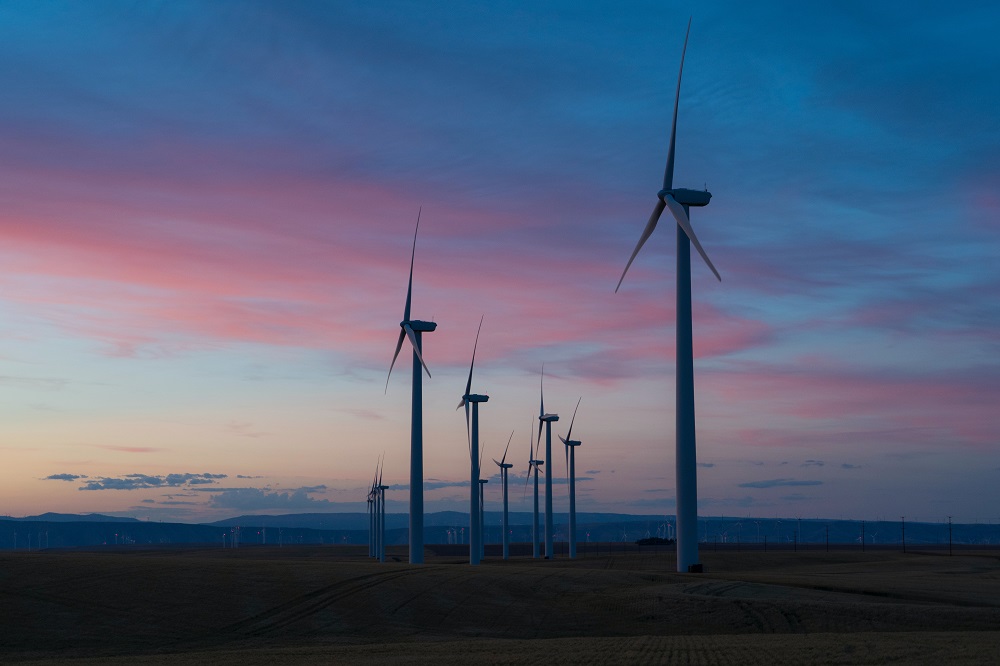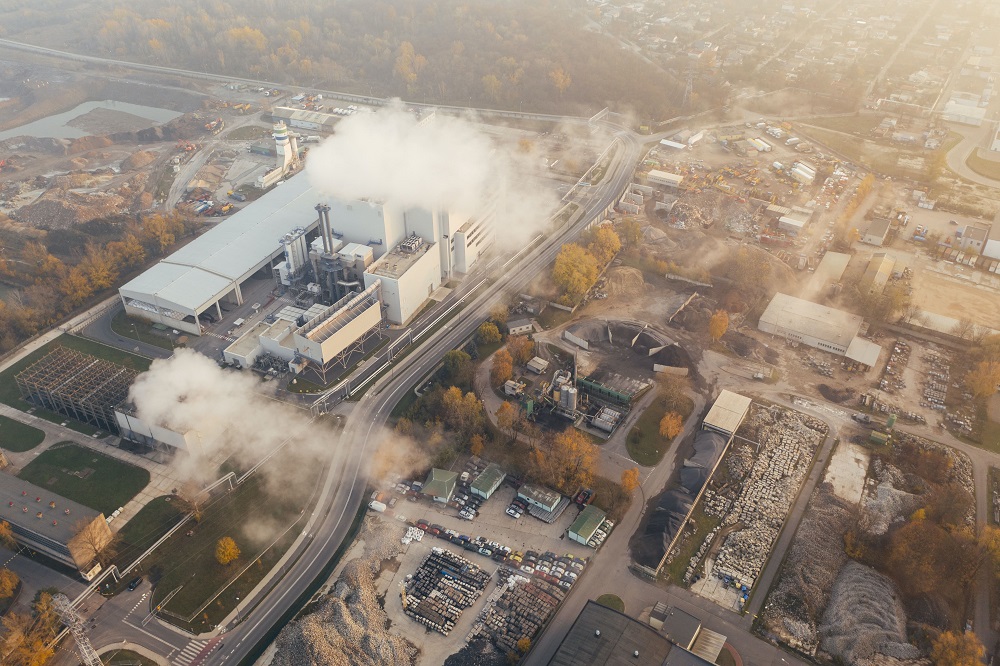In today's climate-conscious world, businesses are tackling increasing pressure to reduce their carbon impact while acting against climate change.
In order to combat the adverse effects, organizations are expected to dramatically lower their GHG emissions by 50% by the year 2030. However, the ultimate objective is to eliminate the emission by 90% – 95% by 2050. This will require a collaborative effort from governments, businesses, and society.
The most relevant and disputed issues - environmental problems require different approaches to overcome the natural imbalance. The emissions result in serious consequences for humans and their environment. Owing to this, carbon footprint and carbon offsetting have become relevant, especially for understanding the gaseous emissions and how they lead to climate change.
Carbon offsetting presents an achievable solution for individuals and businesses to compensate for their GHG emissions by investing in initiatives to reduce carbon emissions. This can be undertaken by purchasing carbon credits from projects across reforestation, renewable energy, or energy efficiency.
The idea is - that if an individual or business cannot significantly eliminate their carbon footprint, they can still have a positive impact by funding projects that decrease emissions elsewhere.
Introduction to Carbon Offset
Carbon Offsetting can be characterized as the mitigation of carbon footprints with the development of alternative initiatives like solar, wind, tidal energy, or reforestation. The emission of greenhouse gases is a growing global problem, and carbon offsets present the idea that any reduction across any region is worthwhile. It measures how much carbon dioxide (CO2) is produced from daily life.
Carbon offsetting offers a way to make a positive impact on the environment by enabling individuals and organizations to support environmentally conscious third-party institutions and initiatives that offset carbon footprint.
Understanding Carbon Footprint
Carbon footprint is viewed as the total amount of greenhouse gases (GHG) generated to support human activities, directly and indirectly. Carbon footprint is expressed in equivalent tons of carbon dioxide (CO2). The two types of carbon footprints are given below:

-
Organizational: This includes emissions from all the activities across the organization, including industrial processes, energy use, and company vehicles.
-
Product: These include emissions over the whole life of a product or service, ranging from the extraction of raw material to manufacturing, use, recycling, or disposal.
It is a very powerful tool for understanding the impact of personal behavior on global warming. The six Green House Gasses (GHGs) are listed below:
-
Carbon dioxide (CO2)
-
Methane (CH4)
-
Nitrous Oxide (N2O)
-
Hydrofluorocarbons (HFCs)
-
Perfluorocarbon (PFCs)
-
Sulphur hexafluoride (SF6)
So, the release of each of the above-mentioned gases can be counted as a part of the carbon footprint.
The Role of Carbon Offset
Carbon offset refers to any activity that helps compensate for the emission of carbon dioxide (CO2) or other greenhouse gases and provides for an emission reduction elsewhere.
With greenhouse gases being widespread in Earth’s atmosphere, the climate benefits from emission reductions. If carbon reductions are equal to that of the total carbon footprint of any activity, then it is considered to be carbon neutral.
Read more: 50% Reduction in Carbon Emissions by 2030 – Sustainable Future With EU Taxonomy
Types of Carbon Offset Projects
The use of carbon offset refers to emissions compensated for new emissions in high-pollution areas. With the growing concern about CO2 as an atmospheric pollutant, there has been a rise in carbon offset projects. Today, there are different types of carbon offsetting projects that organizations can select from, including:
-
Renewable energy projects help generate clean and renewable energy like wind, solar, hydro, or biogas, thus replacing energy generated from fossil fuels and reducing emissions.
-
Reforestation and forest conservation projects help protect and restore forests.

-
Agricultural and livestock management projects assist in improving the management of agricultural lands as well as help in reducing emissions from livestock operations.
-
Landfill gas capture projects capture and utilize/recycle methane (CH4), a potent GHG emitted from decomposing organic waste in landfills.
How Carbon Offset Works?
A form of trade, carbon offsetting projects help reduce greenhouse gas emissions. The projects help restore forests, update power plants and factories, or enhance energy efficiency.
Carbon offset solutions allow businesses and individuals to pay for reducing the global GHG total instead of making radical or impossible reductions. Unlike other pollutants, GHG emissions mix quickly with the air and spread around the entire planet. Due to this, it does not matter where carbon reductions occur if fewer emissions enter the atmosphere.
People and businesses buy carbon offset credits to reduce their carbon footprints and to build their green image. Carbon offsets can counteract specific activities such as air travel and driving.
As the commercial carbon trade is an emerging market, judging the quality of offset providers and projects becomes difficult. However, carbon offsets help in raising awareness about lowering the GHG world total.
Benefits of Carbon Offset
The purpose of driving carbon offsetting projects is twofold: it helps in taking responsibility, on individual and organizational levels, for carbon footprint and helps in mitigating the effects of climate change. By supporting carbon offsetting initiatives, individuals as well as businesses can counterbalance the outcomes of their emissions while also contributing to the reduction of GHG in the atmosphere.
Some of the benefits of carbon offsetting are as follows:
-
Enhanced reputation: By offsetting emissions, businesses can demonstrate to their stakeholders the actions they are taking to reduce their carbon footprint and contribute to the struggle against climate change.
-
Compliance with regulations: Carbon offsetting presents businesses with solutions to meet regulatory requirements by enabling them to balance the emissions that exceed regulatory limits by funding emission reduction projects.
-
Cost savings: By offsetting emissions by purchasing carbon credits from initiatives that reduce or remove GHGs, businesses can achieve their targets without investing in costly technology upgrades or operational changes.
-
Risk management: By participating in carbon offsetting projects, businesses can manage their operational risks like potential operational disruptions.
-
Business growth: By investing in low-carbon technologies, businesses can demonstrate their commitment to sustainability. They enhance their stakeholder relationships and attract new customers. Organizations can also prioritize environmentally conscious businesses.
Challenges in Implementing Carbon Offset
The act of negating CO2 emissions generated in one place by reducing emissions elsewhere or carbon offset can be pursued through carbon projects like planting trees or installing solar panels. These measures can help in reducing CO2 emissions. However, there are still some challenges associated with carbon offsets. They are:
-
Transparency and Accountability: Some challenges that concern carbon offset projects include transparency and accountability. Certain carbon offset projects can be more effective and beneficial to local communities.

-
Effectiveness: Carbon offsets do not reduce emissions directly but only by negating emissions elsewhere. Due to this reason, actual emission reductions should be a top priority.
-
Dependency on Carbon Offset Projects: Many are concerned that the use of carbon offsets is making people and companies overly dependent on carbon offset projects.
-
Quality of the Projects: There are also growing concerns about the existing carbon offset projects as they are deemed ineffective in reducing emissions or even harming local communities, making it vital to choose transparent carbon offset projects.
-
Cost: While carbon offsets can be considered a cheaper alternative to direct emissions reductions, the cost of carbon offset projects varies depending on the type of project as well as its location.
Incorporating Carbon Offset into Business Models
Achieving the set target of reaching net-zero emissions by 2050 requires a yearly decrease in greenhouse gas (GHG) emissions by 7.6%. This will lead to a 50% reduction by the year 2030. The active participation of states and citizens is crucial to raising awareness about the pressing nature of climate change as well as formulating policies to support climate actions.
However, attaining this goal is not straightforward and requires a multifaceted approach incorporating both short- and long-term strategies and measures. While carbon offsetting plays a critical role, it can be difficult to know when to take the first step.
What can businesses do to offset their carbon emissions?
Let's explore the various steps an organization can follow to offset its carbon emissions:
A) Calculate, measure, and monitor their carbon footprint: The first step involves accurately measuring and tracking the emissions generated by the organization. This climate change data is critical to determine the extent of emissions that are required to achieve carbon neutrality. Organizations can undertake globally accepted standards and specific protocols to calculate and measure their emissions. This protocol categorizes emissions into:
-
Scope 1: Direct emissions from sources that the organization can control.
-
Scope 2: Indirect emissions generated from purchased electricity, heat, or cooling.
-
Scope 3: Other indirect emissions from the organization's value chain.
B) Set targets: After gaining a clear understanding of a business’s carbon footprint, setting specific goals and targets can help in reducing them. This includes tangible targets over a specific period.
C) Implement carbon emissions reduction strategies: This involves energy-efficient upgrades, adopting renewable energy sources, and changing business processes and supply chain operations.
D) Offset remaining emissions: After reducing the emissions, businesses can offset their remaining emissions by purchasing carbon offsets. These represent reduced emissions from another source.
E) Choosing a reputable carbon offset provider: Opting for transparent, credible, and verified offset providers helps ensure high-quality offsets that are permanent and verifiable.
F) Reduce emissions: Improving the processes for reducing carbon footprint over time involves investment in new technologies and making effective changes to the business model.
G) Monitor and report: Making necessary and regular updates helps in tracking the defined goals. Businesses can also communicate their carbon-offsetting efforts to stakeholders and customers in order to demonstrate their commitment to reducing their environmental impact.
Read more: “Double the Emissions Reductions”: Could Carbon Markets Avert the Climate Crisis?

The Future of Carbon Offset
There has been a growing concern over the impact of human activities on the environment. This has encouraged individuals and organizations alike to take critical measures to reduce their carbon footprint. And carbon offsetting offers a viable means of achieving this goal.
Carbon offsetting involves compensating for emissions by integrating measures and activities that aid in reducing or removing CO2 from the atmosphere. In the carbon offset market, which is set to be valued at half a trillion dollars annually by 2050, there is a rise in demand for companies to work toward net-zero goals. The supply is likely to increase by 60-fold depending on how carbon removal and nature-based solutions scale.
By keeping prices reasonable and incorporating critical technology-based carbon removal solutions, organizations and individuals can make the most impactful change, thereby reducing their carbon footprint in the long run.
SG Analytics, recognized by the Financial Times as one of APAC's fastest-growing firms, is a prominent insights and analytics company specializing in data-centric research and contextual analytics. Operating globally across the US, UK, Poland, Switzerland, and India, we expertly guide data from inception to transform it into invaluable insights using our knowledge-driven ecosystem, results-focused solutions, and advanced technology platform. Our distinguished clientele, including Fortune 500 giants, attests to our mastery of harnessing data with purpose, merging content and context to overcome business challenges. With our Brand Promise of "Life's Possible," we consistently deliver enduring value, ensuring the utmost client delight.
A leader in ESG Services, SG Analytics offers bespoke sustainability consulting services and research support for informed decision-making. Contact us today if you are searching for an efficient ESG (Environmental, Social, and Governance) integration and management solution provider to boost your sustainable performance.
Frequently Asked Questions (FAQs)
A. What is a carbon offset?
Carbon offsetting involves a reduction in, or removal of, carbon dioxide (CO2) along with other greenhouse gas (GHG) emissions from the atmosphere to compensate for emissions made elsewhere.
B. How can individuals contribute to carbon offset initiatives?
Carbon reductions can be accomplished in smaller ways via individual action, such as changing to a more sustainable diet or opting for greener transportation like electric vehicles or trains with hybrid locomotives.
C. Are all carbon offset projects reliable and effective?
While carbon offset projects may not entirely cut planet-heating emissions, a vast majority of the projects most frequently are used to offset greenhouse gas emissions and have fundamental failings suggesting they cannot be relied upon entirely to cut down on planet-heating emissions.
D. What is the difference between carbon offset and carbon neutrality?
Going carbon neutral requires balancing the emissions with equivalent offsets. However, these offsets can simply be carbon reduction offsets. Carbon reduction offsets also involve projects like wind farms and solar generation.
E. How does carbon offset contribute to sustainable development goals?
Carbon credits support SDG 13 by cutting down on GHG emissions. By investing in carbon credit projects, institutions or individuals can offset their emissions and contribute to global efforts for climate change.
About SG Analytics
SG Analytics is an industry-leading global insights and analytics firm providing data-centric research and contextual analytics services to its clients, including Fortune 500 companies, across BFSI, Technology, Media & Entertainment, and Healthcare sectors. Established in 2007, SG Analytics is a Great Place to Work® (GPTW) certified company and has a team of over 1100 employees and has presence across the U.S.A, the U.K., Switzerland, Canada, and India.
Apart from being recognized by reputed firms such as Analytics India Magazine, Everest Group, and ISG, SG Analytics has been recently awarded as the top ESG consultancy of the year 2022 and Idea Awards 2023 by Entrepreneur India in the “Best Use of Data” category.









